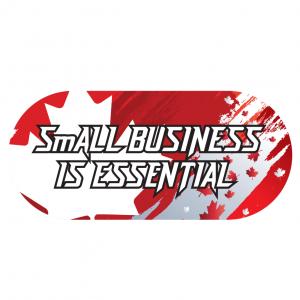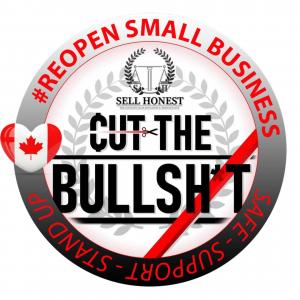
Small Business Has been Targeted by Unfair Restrictions
What Is The Science Behind These Lockdowns?
Small Business is Essential of Canada wants to challenge the metrics in the colour-coded zones that the Ontario government has created. These restrictions do not take into account whether or not the businesses are compliant. The grey-lockdown tier includes maximum measures closing most customer based operations, but “essential” stores and retailers can still open with capacity restrictions. The red-control zone has stringent standards with fewer capacity restrictions, and the orange-restrict zone has intermediate measures with screening requirements and no capacity limits in essential stores. Restaurants are then allowed 50 guests indoors. The yellow-protect includes passive screening, and restaurants remain at the same capacity limit above. The green-prevent zone is based on standard measures where stores can have signs up, and areas like gyms and organized events require a capacity limit. Where is the science behind these set measures? What outcomes are we achieving from this framework? What is the new normal? Small businesses are forgotten in these unfair classifications. The new normal should focus on businesses being permitted to take ownership of their own space to ensure the safety of their customers and employees.
Some small businesses have been closed more than they’ve been open. According to the Government of Canada and CFIB, in 2019, there were 1.2 million small businesses in Canada. Approximately 58,000 businesses became inactive in 2020, and now, one in six small business owners are considering a permanent closure. Big-box stores deemed essential can operate with almost no restrictions, while small businesses have strict limits or are forced to close. The Thunder Bay and Simcoe-Muskoka health units have been moved back into the grey tier of Ontario’s colour-coded pandemic response plan, where restaurants must close for in-person dining, and non-essential retail businesses must operate at 25 percent capacity. This closure was based on possibility and probability modeling regarding the spread of specific variants. At the same time, “essential” businesses (supermarkets and big-box grocery stores) are permitted and continue to operate at 50 percent capacity. Why are there different rules for different businesses?
Whether businesses are large or small, they should have the same restrictions on their capacity limits. For example, Costco can have a certain number of people in their space based on the area, while a restaurant is limited to ten customers at a time to adhere to the “indoor gathering” rules under the colour-coded system; the size of a restaurant’s space is then disregarded. The activity itself should not be the basis of the decision for restrictions. Can businesses operate and still protect their employees and customers? If they can provide that protection and safety, then they should be allowed to operate.
We need to focus on what we know, which are the many risk factors that increase transmission of COVID-19. Risk factors include close contact, closed spaces, crowded places, and forceful exhalation. Close contact is the highest risk factor, and if we limit these, we can keep regions open and safe. If these are the risks, why are large businesses open with crowded spaces and a lack of control to prevent close contact? Why do small businesses that sell similar products and restaurants that have suitable space continue to close? If the principles for keeping Ontario safe and open include a responsible, proactive, clear, responsive, graduated, and evidence-informed framework, where is the reasoning behind these decisions? Why isn’t there a clear and concise tier for ALL businesses to reopen and take responsibility for their own space?
We need to identify the problem before we talk about a solution. Our current actions reflect our future results, and if we don’t make a change, then we will continue losing pieces of our community and, in turn, our economy. Lockdowns have greatly affected small businesses, and our communities are already seeing and feeling the damage.
Small Business is Essential of Canada has started a Small Business Protection Act petition to take action with small businesses and give them the protection they need. Sign the petition to help force the government to make decisions based on health risks and not separate essential and non-essential businesses. Join Social Distance Management for SmALL Business is Essential Day on March 9, 2021, to discuss the issues and questions addressed above and support the voices that have been ignored; reopen small businesses.
Edward Henry
Social Distance Management
+1 416-623-7065
email us here
Visit us on social media:
Facebook
Edward Henry explains the need of the Small Business Protection Act
Distribution channels: Automotive Industry, Aviation & Aerospace Industry, Banking, Finance & Investment Industry, Book Publishing Industry, Building & Construction Industry, Business & Economy, Companies, Conferences & Trade Fairs, Food & Beverage Industry, Human Rights ...
Legal Disclaimer:
EIN Presswire provides this news content "as is" without warranty of any kind. We do not accept any responsibility or liability for the accuracy, content, images, videos, licenses, completeness, legality, or reliability of the information contained in this article. If you have any complaints or copyright issues related to this article, kindly contact the author above.
Submit your press release

